Kontakt Chemie DUST OFF 67 Handleiding
Kontakt Chemie
Niet gecategoriseerd
DUST OFF 67
Bekijk gratis de handleiding van Kontakt Chemie DUST OFF 67 (8 pagina’s), behorend tot de categorie Niet gecategoriseerd. Deze gids werd als nuttig beoordeeld door 60 mensen en kreeg gemiddeld 4.0 sterren uit 30.5 reviews. Heb je een vraag over Kontakt Chemie DUST OFF 67 of wil je andere gebruikers van dit product iets vragen? Stel een vraag
Pagina 1/8

SAFETY DATA SHEET
SECTION 1: Identification of the substance/mixture and of the company/undertaking
1.1. Product identifier
Trade name or designation
of the mixture
DUST OFF 67
-
Registration number
EN1X-G8KA-W00J-4XF5
UFI:
None.
Synonyms
BDS002485AE
Product code
14-March-2022
Issue date
1.0
Version number
14-March-2022
Revision date
1.2. Relevant identified uses of the substance or mixture and uses advised against
Cleaners - Precision
Identified uses
None known.
Uses advised against
1.3. Details of the supplier of the safety data sheet
CRC Industries Europe bv
Company name
Touwslagerstraat 1
Address
9240 Zele
Belgium
+32(0)52/45.60.11
Telephone
hse@crcind.com
www.crcind.com
CRC Industries UK Ltd.
Company name
Wylds Road
Address
Castlefield Industrial Estate
TA6 4DD Bridgwater Somerset
United Kingdom
+44 1278 727200
Telephone
+44 1278 425644
Fax
hse.uk@crcind.com
E-mail
www.crcind.com
Website
Tel.:(+44)(0)1278 72 7200 (office hours: 9-17h CET)
1.4. Emergency telephone
number
SECTION 2: Hazards identification
2.1. Classification of the substance or mixture
The mixture has been assessed and/or tested for its physical, health and environmental hazards and the following classification
applies.
Classification according to Regulation (EC) No 1272/2008 as amended
2.2. Label elements
Label according to Regulation (EC) No. 1272/2008 as amended
None.
Hazard pictograms
Signal word Warning
Hazard statements
H229
Pressurized container: May burst if heated.
Precautionary statements
Prevention
P102
Keep out of reach of children.
P210
Keep away from heat/sparks/open flames/hot surfaces. No smoking.
P251
Do not pierce or burn, even after use.
SDS GREAT BRITAIN
Material name: DUST OFF 67 - Kontakt chemie - Europe
BDS002485AE Version #: 1.0 Revision date: 14-March-2022 Issue date: 14-March-2022 1 / 8

Response
P336
Thaw frosted parts with lukewarm water. Do not rub affected area.
Storage
P410 + P412
Protect from sunlight. Do not expose to temperatures exceeding 50°C/122°F.
Disposal Not assigned.
Supplemental label information Avoid contact with skin and eyes, in case of contact with liquid product frostbite symptoms may
occur.
Regulation (EC) No 648/2004 on detergents: halogenated hydrocarbons > 30%
This mixture does not contain substances assessed to be vPvB / PBT according to Regulation
(EC) No 1907/2006, Annex XIII.
2.3. Other hazards
SECTION 3: Composition/information on ingredients
Mixture
General information
Notes
Index No.
REACH Registration No.
CAS-No. / EC No.
%
Chemical name
Classification:
-(E)-1,3,3,3-tetrafluoroprop-1-ene 01-0000019758-5429118-24-9
471-480-0
75 - 100
-
List of abbreviations and symbols that may be used above
#: This substance has been assigned Union workplace exposure limit(s).
M: M-factor
PBT: persistent, bioaccumulative and toxic substance.
vPvB: very persistent and very bioaccumulative substance.
All concentrations are in percent by weight unless ingredient is a gas. Gas concentrations are in percent by volume.
SECTION 4: First aid measures
Ensure that medical personnel are aware of the material(s) involved, and take precautions to
protect themselves.
General information
4.1. Description of first aid measures
If symptoms develop move victim to fresh air. Get medical attention if symptoms persist.
Inhalation
Wash off with soap and water. Get medical attention if irritation develops and persists.
Skin contact
Rinse with water. Get medical attention if irritation develops and persists.
Eye contact
Rinse mouth. Get medical attention if symptoms occur.
Ingestion
Exposure may cause temporary irritation, redness, or discomfort.
4.2. Most important symptoms
and effects, both acute and
delayed
Treat symptomatically.
4.3. Indication of any
immediate medical attention
and special treatment needed
SECTION 5: Firefighting measures
Not available.
General fire hazards
5.1. Extinguishing media
Water. Alcohol resistant foam. Carbon dioxide (CO2). Dry sand.
Suitable extinguishing
media
Do not use water jet as an extinguisher, as this will spread the fire.
Unsuitable extinguishing
media
During fire, gases hazardous to health may be formed.
5.2. Special hazards arising
from the substance or mixture
5.3. Advice for firefighters
Self-contained breathing apparatus and full protective clothing must be worn in case of fire.
Special protective
equipment for firefighters
Containers should be cooled with water to prevent vapour pressure build up.
Special fire fighting
procedures
Use standard firefighting procedures and consider the hazards of other involved materials.
Specific methods
SECTION 6: Accidental release measures
6.1. Personal precautions, protective equipment and emergency procedures
Wear appropriate personal protective equipment.
For non-emergency
personnel
SDS GREAT BRITAIN
Material name: DUST OFF 67 - Kontakt chemie - Europe
BDS002485AE Version #: 1.0 Revision date: 14-March-2022 Issue date: 14-March-2022 2 / 8

Keep unnecessary personnel away. Use personal protection recommended in Section 8 of the
SDS.
For emergency responders
Avoid discharge into drains, water courses or onto the ground.
6.2. Environmental precautions
Stop leak if you can do so without risk. Move the cylinder to a safe and open area if the leak is
irreparable. Isolate area until gas has dispersed. Eliminate all ignition sources (no smoking, flares,
sparks, or flames in immediate area). Keep combustibles (wood, paper, oil etc) away from spilled
material. This product is miscible in water.
6.3. Methods and material for
containment and cleaning up
For personal protection, see section 8 of the SDS. For waste disposal, see section 13 of the SDS.
6.4. Reference to other
sections
SECTION 7: Handling and storage
Pressurised container: Do not pierce or burn, even after use. Do not use if spray button is missing
or defective. Do not spray on a naked flame or any other incandescent material. Do not smoke
while using or until sprayed surface is thoroughly dry. Do not cut, weld, solder, drill, grind, or
expose containers to heat, flame, sparks, or other sources of ignition. Ground and bond containers
when transferring material. Do not re-use empty containers. Avoid prolonged exposure. Use only in
well-ventilated areas. Wear appropriate personal protective equipment. Observe good industrial
hygiene practices.
7.1. Precautions for safe
handling
Contents under pressure. Do not expose to heat or store at temperatures above 120°F/49°C as
can may burst. Do not puncture, incinerate or crush. Do not handle or store near an open flame,
heat or other sources of ignition. Store away from incompatible materials (see Section 10 of the
SDS).
Storage class (TRGS 510): 2B (Aerosol dispensers and lighters)
7.2. Conditions for safe
storage, including any
incompatibilities
Not available.
7.3. Specific end use(s)
SECTION 8: Exposure controls/personal protection
8.1. Control parameters
No exposure limits noted for ingredient(s).
Occupational exposure limits
No biological exposure limits noted for the ingredient(s).
Biological limit values
Follow standard monitoring procedures.
Recommended monitoring
procedures
Not available.
Derived no effect levels
(DNELs)
Predicted no effect
concentrations (PNECs)
Not available.
8.2. Exposure controls
Good general ventilation should be used. Ventilation rates should be matched to conditions. If
applicable, use process enclosures, local exhaust ventilation, or other engineering controls to
maintain airborne levels below recommended exposure limits. If exposure limits have not been
established, maintain airborne levels to an acceptable level.
Appropriate engineering
controls
Individual protection measures, such as personal protective equipment
Personal protection equipment should be chosen according to the CEN standards and in
discussion with the supplier of the personal protective equipment.
General information
Wear safety glasses with side shields (or goggles). Use eye protection conforming to EN 166.
Eye/face protection
Skin protection
For incidental contact with the product wear chemical-resistant gloves (standard EN 374). The use
of disposable gloves is acceptable provided that they are changed immediately after a splash or
spill. Viton gloves are recommended.
- Hand protection
Not available.
- Other
In case of insufficient ventilation, wear suitable respiratory equipment. Recommended respiratory
protection: Compressed air.
Respiratory protection
Wear appropriate thermal protective clothing, when necessary.
Thermal hazards
When using do not smoke. Always observe good personal hygiene measures, such as washing
after handling the material and before eating, drinking, and/or smoking. Routinely wash work
clothing and protective equipment to remove contaminants.
Hygiene measures
Emissions from ventilation or work process equipment should be checked to ensure they comply
with the requirements of environmental protection legislation. Fume scrubbers, filters or
engineering modifications to the process equipment may be necessary to reduce emissions to
acceptable levels.
Environmental exposure
controls
SECTION 9: Physical and chemical properties
9.1. Information on basic physical and chemical properties
Appearance
Liquid.
Physical state
SDS GREAT BRITAIN
Material name: DUST OFF 67 - Kontakt chemie - Europe
BDS002485AE Version #: 1.0 Revision date: 14-March-2022 Issue date: 14-March-2022 3 / 8
Product specificaties
| Merk: | Kontakt Chemie |
| Categorie: | Niet gecategoriseerd |
| Model: | DUST OFF 67 |
Heb je hulp nodig?
Als je hulp nodig hebt met Kontakt Chemie DUST OFF 67 stel dan hieronder een vraag en andere gebruikers zullen je antwoorden
Handleiding Niet gecategoriseerd Kontakt Chemie

13 Juni 2023

13 Juni 2023

13 Juni 2023

13 Juni 2023

13 Juni 2023

13 Juni 2023

13 Juni 2023

13 Juni 2023

13 Juni 2023

21 Februari 2023
Handleiding Niet gecategoriseerd
- Hoymiles
- View Quest
- REMKO
- Taco Tuesday
- Longvie
- Coboc
- Solis
- Champion
- Graff
- Dalla Corte
- Fontiso
- Faber
- PowerColor
- Nutrichef
- GoDEX
Nieuwste handleidingen voor Niet gecategoriseerd
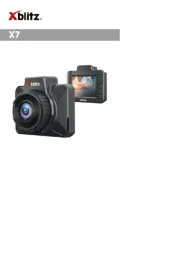
7 Augustus 2025
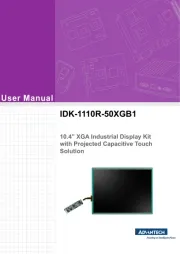
7 Augustus 2025
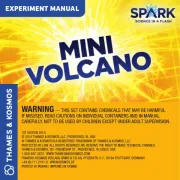
6 Augustus 2025
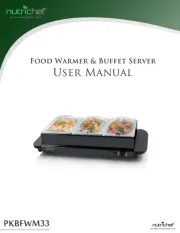
6 Augustus 2025
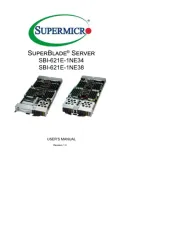
6 Augustus 2025
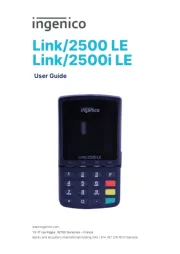
6 Augustus 2025
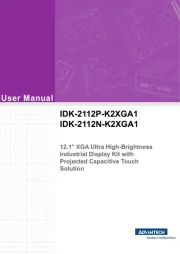
6 Augustus 2025
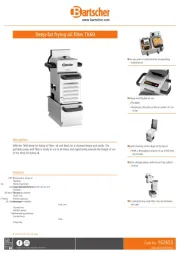
6 Augustus 2025
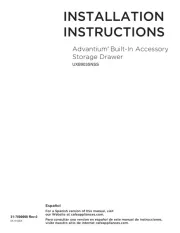
6 Augustus 2025
